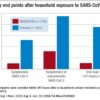A bit of revisionist history has outpatient influenza activity at a lower level than was reported last week, even though it hasn’t dropped.
The proportion of outpatient visits for influenza-like illness (ILI) for the week ending Feb. 10 was 7.5%, according to the Centers for Disease Control. That is lower than the 7.7% previously reported for the week ending Feb. 3, which would seem to be a drop, but the CDC also has revised that earlier number to 7.5%, so there is no change. (This is not the first time an earlier ILI level has been retroactively lowered: The figure reported for the week ending Jan. 13 was revised in the following report from 6.3% down to 6.0%.)
These two consecutive 7.5%’s mean that ILI activity for the 2017-2018 season has not quite matched that of the pandemic in 2009, which hit 7.7% and also suggests that outpatient visits may have finally peaked. That is supported by a slight reduction in the number of states at the highest level of ILI activity, which went from 41 down to 39, although the number in the “high” range (8-10) on the CDC’s 1-10 scale went up from 44 to 45, according to data from the CDC’s Outpatient Influenza-like Illness Surveillance Network.
Hospital visits, however, continue to rise at record levels. The cumulative rate for the week ending Feb. 10 was 67.9 visits per 100,000 population, which is higher than the same week for the 2014-2015 (52.9 per 100,000) when flu hospitalizations for the season hit a high of 710,000. Flu-related pediatric deaths also went up, with 22 new reports; this brings the total to 84 for the 2017-2018 season.
© Frontline Medical Communications 2018-2021. Reprinted with permission, all rights reserved.

